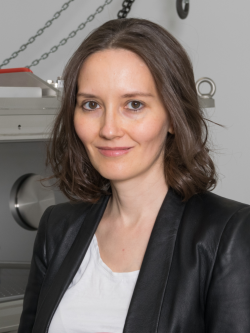Event Date/Time
Location
EQuad D Wing
Room D221
Room D221
Series/Event Type
MAE Departmental Seminars
When low-intensity light reflects from a mirror, its spectrum is preserved. At ultra-high laser intensity, however, any solid surface turns into a fully-ionized plasma mirror that moves at a relativistic speed. The reflected light then contains high-order harmonics of the incident light’s fundamental frequency, extending into the x-ray range. I will describe our experiments and theory studying the fundamental processes behind these relativistically-driven plasma mirrors, and explain their origin, spectral scaling and x-ray efficiency limits. With new lasers now under development, it is expected that such x-ray pulses will exceed the peak powers obtained at x-ray free-electron laser facilities.
Speaker Bio
Julia Mikhailova is an Assistant Professor at the Department of Mechanical and Aerospace Engineering and Associated Faculty with the Andlinger Center for Energy and the Environment and the Princeton Plasma Physics Laboratory at Princeton University. She leads a research program in strong-field and ultrafast laser physics --https://www.mikhailovalab.com/ -- supported by the NSF and DOE. Her work integrates experimental and theoretical research to get a better understanding of the physics of laser-matter interactions under extreme conditions and use those interactions to study ultrafast dynamics of matter. Before joining Princeton as a faculty member, she was a postdoctoral researcher at the Max Planck Institute for Quantum Optics in Germany for five years, and a research scientist at the A.M. Prokhorov General Physics Institute in Russia. She got her undergraduate degree (2003) and PhD in Physics (2007) from M.V. Lomonosov Moscow State University in Russia.
Image

Julia Mikhailova, Princeton University, MAE